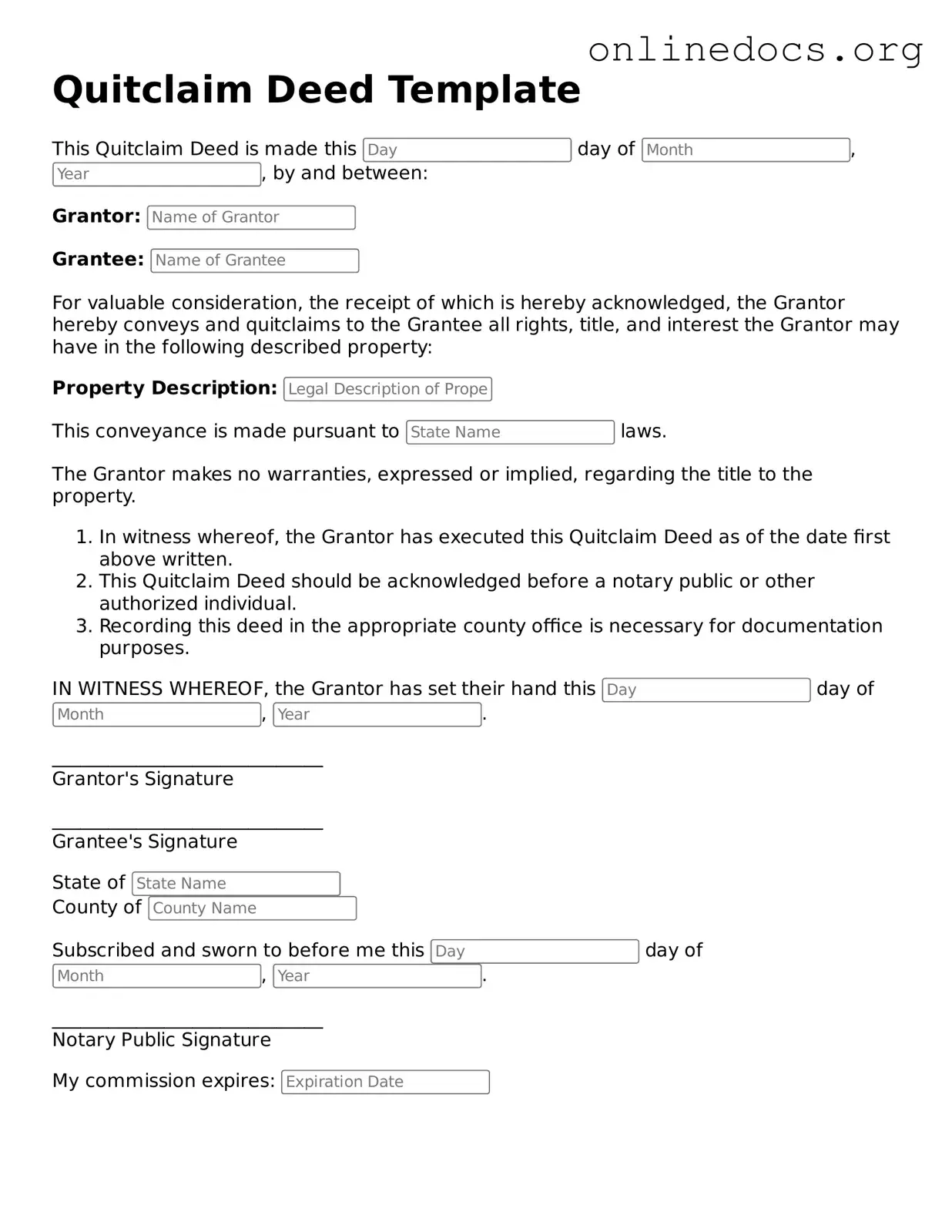A Warranty Deed is similar to a Quitclaim Deed in that both are used to transfer property ownership. However, the key difference lies in the guarantees provided. A Warranty Deed offers a guarantee that the grantor holds clear title to the property and has the right to transfer it. In contrast, a Quitclaim Deed does not provide any such guarantees. This means that if there are any issues with the title, the grantee has no recourse against the grantor. Thus, while both documents serve to transfer property, the level of protection for the buyer varies significantly.
A Bargain and Sale Deed also shares similarities with a Quitclaim Deed, as it is used to transfer property. This type of deed implies that the grantor has the right to sell the property but does not provide any warranties regarding the title. Like a Quitclaim Deed, it offers limited protection for the buyer. The primary distinction is that a Bargain and Sale Deed suggests that the grantor may have ownership rights, whereas a Quitclaim Deed merely conveys whatever interest the grantor may have, if any.
An Executor’s Deed is another document that resembles a Quitclaim Deed. This type of deed is used when an executor of an estate transfers property from the deceased to the heirs or beneficiaries. While both deeds facilitate the transfer of property, an Executor’s Deed often comes with a statement of authority, indicating that the executor has the legal right to make the transfer. Unlike a Quitclaim Deed, which provides no guarantees, an Executor’s Deed may imply that the executor has the authority to act on behalf of the estate.
As individuals consider their estate planning, it's essential to understand the role of various legal documents like the Last Will and Testament, which can be complemented by forms like a Quitclaim Deed. This ensures clarity in ownership and intentions regarding property. For those seeking templates or guidance on such legal instruments, legalformspdf.com provides valuable resources to navigate these important decisions.
A Trustee’s Deed is also similar to a Quitclaim Deed in that it transfers property held in a trust. This document is used when a trustee conveys property to a beneficiary or sells property held in trust. Like a Quitclaim Deed, a Trustee’s Deed may not provide any warranties about the title. However, it does indicate that the trustee has the authority to make the transfer, which adds a layer of legitimacy that a Quitclaim Deed does not inherently possess.
A Deed of Gift is another document that resembles a Quitclaim Deed. It is used to transfer property without any exchange of money. While a Quitclaim Deed can also be used in a similar manner, a Deed of Gift typically includes a statement that the transfer is a gift. This document may offer more clarity regarding the intentions of the parties involved. However, like a Quitclaim Deed, it does not provide any warranties about the title, leaving the recipient with potential risks.
Finally, a Special Purpose Deed, such as a Deed in Lieu of Foreclosure, shares characteristics with a Quitclaim Deed. This type of deed is used when a property owner voluntarily transfers the property to the lender to avoid foreclosure. Similar to a Quitclaim Deed, it does not guarantee a clear title. The primary focus is on the transfer of ownership, often under specific circumstances. While both types of deeds serve the purpose of transferring property, the context and implications of each can differ significantly.
